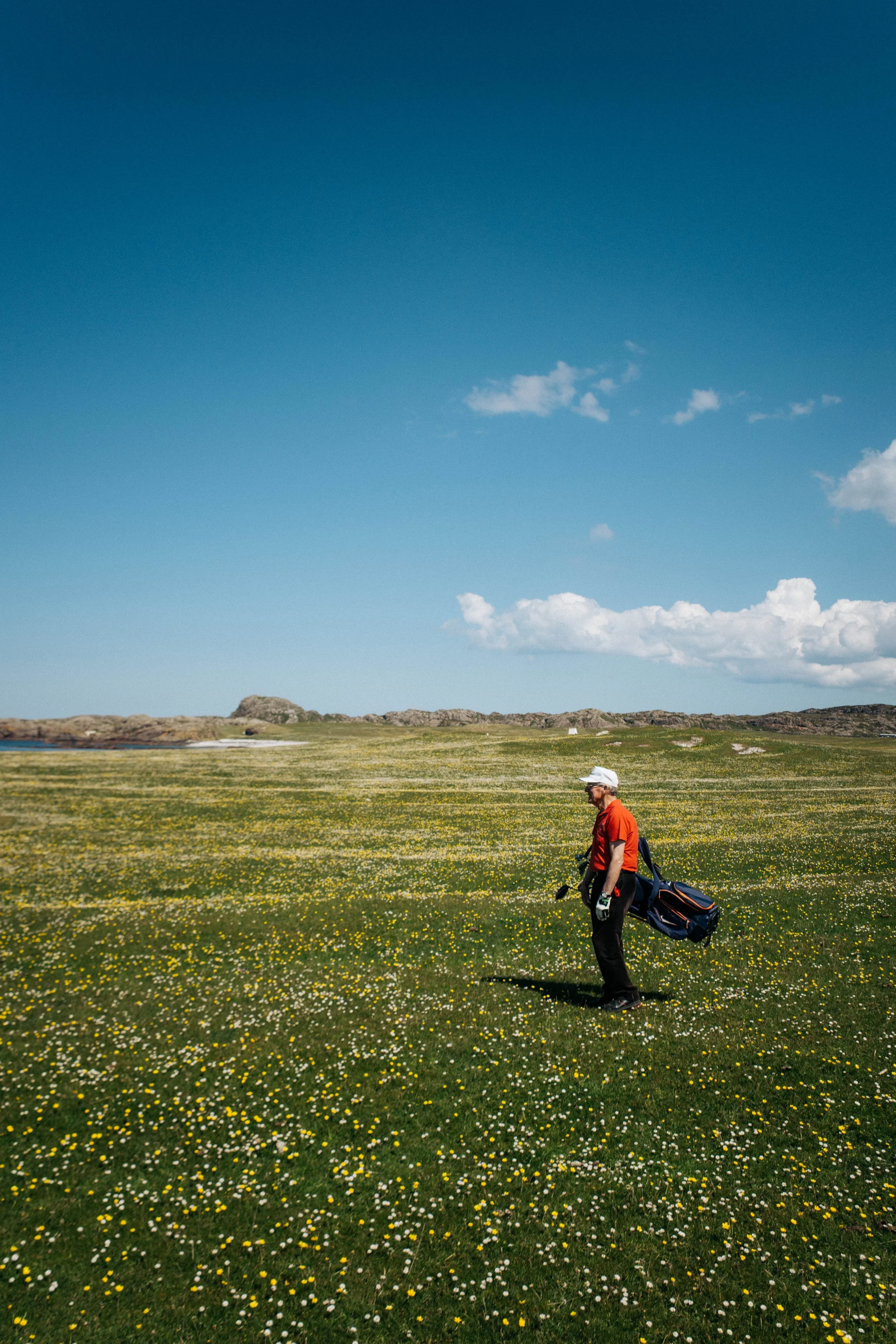Clover
(from McKellar Magazine Issue #7)
Source: Random Golf Club
By surprisingly many, golf courses are perceived as glorified lawns, void of any value other than as a recreational playing surface. I don’t personally believe this narrative, however there is some validity to that sentiment. A pristine stand of turfrass can require an incredible amount of resources; water, chemicals (fertilizers, growth regulators, pesticides), fuel, and labor. Does all of that effort provide an appropriate return, either economically, environmentally, or socially? And if not, how can we as golfers, designers, and golf course managers create more value from our efforts?
When McKeller editor, Thomas Dunne, asked me to pick a favorite design feature related to golf course architecture I wanted to select something representative of my interest in finding ways for golf to partner with nature and something that shows that an alternative narrative exists, contrary to the commonly held belief that golf is damaging to the environment.
My journey to become a golf course architect that focuses on enhancing the connection of golf to its ecosystem and its community began, in part, thanks to my dad, but also to Dr. Alister MacKenzie and Renaissance Golf Design. I grew up playing a MacKenzie course and always felt a strong connection to the layout and how it utilized the natural landscape, but when Renaissance Golf Design conducted a restoration of that course (thanks to all the research done by RGD), I was shown the true genius of the design and the execution of MacKenzie’s philosophy to “imitate the beauties of nature so closely as to make [the] work indistinguishable from nature itself.” That MacKenzie quote guides a lot of my work in the efforts of Greener Golf to push the golf industry to a (beyond) sustainable future. I have elaborated on that MacKenzie quote to include how the golf course interacts with its ecosystem and how it is managed and its trajectory into the future.
One of my favorite design features of a golf course is a throwback technology that in our modern game is considered, when present, a blemish in the management program and a failure of the greenskeeper. I am talking of a species of plants commonly known as clover (scientifically Trifolium spp.). Yes, a favorite golf course design feature of mine is the presence of a plant often considered a “weed”.
Clover is in the legume family of plants; leaves that look like shamrocks with flowers of white, pink, and purple. These plants are nitrogen fixers, meaning they are able to harvest nitrogen (an important fertilizer) from the atmosphere and store it in the soil. They also provide an incredible food source for bees and other pollinators, therefore creating a value supporting the local ecosystem and a group species on which humans greatly rely.
If you look at some archive photos of the old golf courses, specifically near the home of golf, you will often see small white flowers growing in the rough and into the longer unmown areas, most likely a variety of clover. Back then, fertilizers were not as often used and irrigation was not as precise as today or not present at all.
Clover’s presence provides nutrients to the other plants in that ecosystem, in golf courses’ cases, primarily turfgrass. The biodiversity in these stands strengthens that turf stand over time and builds a stronger soil microbiome. However, with too much irrigation, clover can outcompete turfgrass stands and lead to ground cover problems. But if turfgrass areas are kept “lean” with dry and firm conditions (reduced water and fertility inputs), the clover and turfgrass can grow together symbiotically, with the added benefit of reducing the amount of water used to irrigate the golf course.
Often, superintendents are on guard against any plant species that may compete with their stands of turfgrass; species variety can create complexity in the management process. But to counter that perspective, a biodiverse landscape is more resilient to stress so biodiversity includes strength in a climate that is harder and harder to predict. The adage “strength in numbers” rings true.
In my experience, when I see clover at a golf course, I see a facility that has a wider focus regarding the role of their golf course. Presence of clover means less fertilizers used, more food for bees, stronger ecosystem resiliency, and often reduced water use, all still while providing an exceptional playing surface. Clover, when managed alongside turf, can provide a good golf ball lie alongside a beautiful aesthetic. There are a variety of species of clover and there are landscape specific species that have small leaves (called micro-clover) that I see as being a perfect partner species to turfgrass.
Allowing clover to flourish at a golf course allows for that facility to partner with nature, supporting the ecosystem, and changing the relationship between golf and nature from one of opposition to an incredible partnership.
Written by: Parker Anderson, Greener Golf
Photo: Random Golf Club

